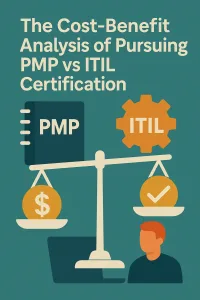Introduction
Understanding the distinction between portfolio management and project management is crucial for achieving optimal performance. While both disciplines are integral to the success of an organization, they serve different purposes and require tailored approaches.
Portfolio management refers to the centralized management of one or more portfolios, which includes the processes, methods, and tools used to manage and prioritize projects and programs in alignment with strategic objectives. It takes a high-level view, overseeing a collection of projects to ensure they contribute effectively to the organization’s goals and deliver value. In contrast, project management focuses on the successful execution of individual projects, emphasizing the completion of specific tasks within defined constraints of time, budget, and quality. This discipline is concerned with the day-to-day operations and the tactical aspects of delivering a project successfully [1][5][11].
The importance of software tools in managing both projects and portfolios cannot be overstated. Effective software solutions enable project and portfolio managers to streamline processes, enhance communication, and improve decision-making. These tools provide essential functionalities such as resource allocation, performance tracking, and reporting, which are vital for managing the complexities of multiple projects and ensuring alignment with broader organizational strategies [2][4][8].
This blog post will focus on the critical task of selecting the right portfolio management software. As project managers navigate the challenges of limited resources and competing priorities, the right software can significantly enhance their ability to manage portfolios effectively, ensuring that all projects are aligned with the organization’s strategic vision and are poised for success [3][9]. By understanding the differences between project management and portfolio management, and recognizing the role of software in these processes, project and portfolio managers can make informed decisions that lead to improved outcomes and greater organizational efficiency.
Understanding Project Management vs. Portfolio Management
Distinguishing between project management and portfolio management is crucial for selecting the right tools and methodologies. Each discipline serves a unique purpose and requires specialized software to optimize performance.
Defining Project Management
Project management encompasses the processes, methodologies, and practices involved in planning, executing, and closing individual projects. The primary goals of project management include:
- Execution of Specific Goals: Project management focuses on delivering projects that meet defined objectives within constraints such as time, scope, and budget. This involves detailed planning and resource allocation to ensure that each project is completed successfully [6][7].
- Methodologies: Various methodologies, such as Agile, Waterfall, and Scrum, guide project managers in executing their projects effectively. These methodologies provide frameworks for managing tasks, timelines, and team collaboration [2].
- Individual Initiatives: A project manager’s role is to oversee individual projects, ensuring that all aspects are aligned and that the project meets its intended outcomes [5].
Defining Portfolio Management
In contrast, portfolio management takes a broader view, focusing on the alignment of multiple projects with the overall business strategy. Key aspects of portfolio management include:
- Strategic Alignment: Portfolio management ensures that the collection of projects undertaken by an organization aligns with its strategic goals and objectives. This involves selecting the right mix of projects that will deliver the most value to the organization [13].
- Resource Optimization: Portfolio management involves optimizing resource allocation across various projects, balancing capacity, and prioritizing initiatives based on their strategic importance [4].
- Holistic View: Unlike project management, which is concerned with individual projects, portfolio management considers the interdependencies and overall performance of all projects within the portfolio [3].
Differing Objectives
The objectives of portfolio management significantly differ from those of project management:
- Focus on Outcomes vs. Execution: While project management is primarily concerned with the successful execution of individual projects, portfolio management focuses on achieving desired outcomes through the strategic selection and management of multiple projects [3][6].
- Long-term vs. Short-term Goals: Project management often emphasizes short-term goals and deliverables, whereas portfolio management is oriented towards long-term strategic objectives and the overall health of the project portfolio [1][13].
Understanding these differences is essential for project and portfolio managers when selecting software tools. Specialized tools designed for portfolio management can provide insights into resource allocation, project prioritization, and alignment with business strategy, while project management tools focus on task execution and team collaboration. By recognizing the distinct roles and objectives of each discipline, managers can make informed decisions that enhance their operational efficiency and drive organizational success.
Key Features of Portfolio Management Software
When selecting portfolio management software, project and portfolio managers must consider several essential features that enhance effectiveness and streamline operations. Here are the key features that make portfolio management software a valuable asset for project managers:
- Resource Allocation and Management Capabilities: Effective portfolio management software should provide robust resource allocation features. This ensures optimal use of staff and materials across multiple projects, allowing managers to assign resources based on availability and project needs. By facilitating efficient resource management, the software helps prevent overallocation and burnout, ultimately leading to better project outcomes [6].
- Reporting and Analytics for Informed Decision-Making: The ability to generate comprehensive reports and analytics is crucial for project managers. Portfolio management software should offer dashboards and analytical tools that provide insights into project performance, resource utilization, and budget adherence. This data-driven approach enables managers to make informed decisions, assess project viability, and align efforts with overall business objectives [12][14].
- Integration with Existing Project Management Tools: Seamless integration with existing project management tools is vital for ensuring a smooth workflow. Portfolio management software should be compatible with other systems used by the organization, allowing for easy data sharing and collaboration. This integration helps maintain consistency across projects and enhances the overall efficiency of project management processes [14].
- User-Friendly Interfaces and Collaboration Features: A user-friendly interface is essential for ensuring that all team members can easily navigate the software. Additionally, collaboration features such as shared workspaces, task assignments, and communication tools are important for fostering teamwork and keeping everyone aligned on project goals. These features enhance communication and coordination, which are critical for successful project execution [7][8].
By focusing on these key features, project and portfolio managers can select the right portfolio management software that not only meets their current needs but also supports their long-term strategic goals.
Benefits of Using Portfolio Management Software
While project management focuses on the execution of individual projects, portfolio management encompasses the strategic oversight of multiple projects to ensure they align with organizational goals. Utilizing dedicated portfolio management software can significantly enhance this process. Here are some key benefits:
- Improved Visibility into Project Performance and Resource Utilization: Portfolio management software provides a comprehensive view of all projects within the portfolio, allowing managers to monitor performance metrics in real-time. This visibility helps in identifying underperforming projects and optimizing resource allocation across the board, ensuring that resources are utilized effectively and efficiently [1][5].
- Enhanced Strategic Alignment of Projects with Organizational Goals: By using portfolio management software, organizations can ensure that all projects are aligned with their strategic objectives. The software facilitates the evaluation of projects based on their contribution to the overall goals, enabling decision-makers to prioritize initiatives that offer the greatest value and impact [1][15].
- Facilitation of Risk Management Across Multiple Projects: Managing risks is a critical aspect of both project and portfolio management. Portfolio management software allows for the identification and assessment of risks at a portfolio level, enabling organizations to implement strategies that mitigate potential issues before they escalate. This proactive approach to risk management enhances the likelihood of project success and minimizes disruptions [1][6].
- Streamlined Communication and Collaboration Among Stakeholders: Effective communication is vital for the success of any project. Portfolio management software fosters collaboration by providing a centralized platform where stakeholders can share updates, documents, and feedback. This transparency not only improves team dynamics but also ensures that everyone is on the same page regarding project statuses and expectations [1][12].
Criteria for Selecting Portfolio Management Software
When it comes to selecting the right portfolio management software, project managers must navigate a variety of factors to ensure optimal performance and alignment with their organizational needs. Here’s a comprehensive checklist to guide project and portfolio managers in evaluating potential software options:
- Assessing Scalability: It is essential to evaluate how well the software can scale with your team size and project volume. As organizations grow, the software should accommodate an increasing number of projects and users without compromising performance. This scalability ensures that the tool remains effective as project demands evolve [1].
- Evaluating Integration Capabilities: Consider how well the portfolio management software integrates with existing tools and systems within your organization. Seamless integration can enhance workflow efficiency and data consistency, allowing for better collaboration across teams. Look for software that can connect with tools already in use, such as project management applications, financial systems, and communication platforms [2][9].
- Considering User Experience and Training Requirements: The user-friendliness of the software is a critical factor. A tool that is intuitive and easy to navigate will reduce the learning curve for team members, leading to quicker adoption and effective use. Additionally, assess the training requirements needed for your team to become proficient with the software. A solution that offers comprehensive training resources can significantly enhance user experience and overall productivity [4][8].
- Analyzing Cost versus Budget and ROI Expectations: Finally, it is crucial to analyze the cost of the software in relation to your budget and the expected return on investment (ROI). Consider not only the initial purchase price but also ongoing costs such as maintenance, upgrades, and support. A thorough cost-benefit analysis will help determine if the software will deliver value that justifies its expense, ensuring that it aligns with your financial goals [3][8].
By carefully considering these criteria, project and portfolio managers can make informed decisions when selecting portfolio management software that meets their specific needs and enhances their project management capabilities.
Top Portfolio Management Software Options
When it comes to selecting the right portfolio management software, project and portfolio managers have a plethora of options to choose from. Each tool offers unique features tailored to different needs, making it essential to understand their strengths and weaknesses. Below is a curated list of some of the leading portfolio management software tools, along with their unique features, target audiences, and insights based on user feedback and expert reviews.
1. Microsoft Project
- Description: A long-standing player in the project management space, Microsoft Project offers robust tools for planning, scheduling, and managing projects.
Unique Features:
- Gantt charts for visual project tracking.
- Integration with other Microsoft Office tools.
- Advanced reporting capabilities.
- Target Audience: Ideal for large organizations and teams familiar with Microsoft products.
Pros:
- Comprehensive features for complex project management.
- Strong integration capabilities.
Cons:
- Steeper learning curve for new users.
- Higher cost compared to some alternatives.
2. Smartsheet
- Description: Smartsheet combines the familiarity of spreadsheets with powerful project management features, making it user-friendly and versatile.
Unique Features:
- Real-time collaboration and sharing.
- Automation of repetitive tasks.
- Customizable dashboards for tracking progress.
- Target Audience: Suitable for teams of all sizes, especially those who prefer a spreadsheet-like interface.
Pros:
- Easy to use and set up.
- Strong collaboration features.
Cons:
- Limited advanced project management features compared to dedicated tools.
- Pricing can escalate with additional features.
3. Monday.com
- Description: Known for its visually appealing interface, Monday.com offers a flexible platform for managing projects and workflows.
Unique Features:
- Customizable workflows and templates.
- Visual project tracking with boards and timelines.
- Integration with various third-party applications.
- Target Audience: Great for teams looking for a highly customizable and visually engaging tool.
Pros:
- Intuitive user interface.
- Strong focus on team collaboration.
Cons:
- May require time to fully customize for specific needs.
- Some users report limitations in reporting features.
4. ProjectManager
- Description: This award-winning software provides a comprehensive suite of tools for planning, managing, and tracking projects in real-time.
Unique Features:
- Multiple project views including Gantt charts, kanban boards, and calendar views.
- Real-time collaboration tools.
- Time tracking and reporting features.
- Target Audience: Suitable for portfolio managers who need a versatile tool for various project management methodologies.
Pros:
- Offers a wide range of project views.
- Strong real-time collaboration capabilities.
Cons:
- Some users find the interface less intuitive.
- Pricing may be a concern for smaller teams.
5. Planview AdaptiveWork
- Description: This software focuses on automating workflows and managing risks, providing a strategic approach to portfolio management.
Unique Features:
- Advanced analytics and reporting tools.
- Resource management capabilities.
- Integration with various business applications.
- Target Audience: Best for organizations looking to enhance their strategic planning and resource allocation.
Pros:
- Strong analytics for informed decision-making.
- Comprehensive resource management features.
Cons:
- Can be complex to set up initially.
- Higher cost may not be justified for smaller teams.
Case Studies: Successful Software Implementation
Portfolio management focuses on aligning projects with strategic business goals, while project management deals with the execution of individual projects. This section highlights real-world examples of organizations that successfully implemented portfolio management software, showcasing the challenges they faced, the software they selected, and the improvements they observed post-implementation.
Case Study 1: GlobalTech Solutions
- Challenges Faced: GlobalTech Solutions struggled with inefficient project selection and resource allocation. The lack of a centralized system made it difficult to prioritize projects effectively, leading to wasted resources and missed opportunities.
- Chosen Software: The organization opted for a comprehensive Project Portfolio Management (PPM) framework that included robust software tools. The decision was driven by the need for a solution that could centralize resource management and provide clear performance metrics.
- Results and Improvements: After implementing the PPM software, GlobalTech Solutions significantly improved its project selection process. The centralized resource management allowed for better allocation of resources, resulting in a more streamlined workflow and enhanced project outcomes. The company reported increased efficiency and a higher success rate for projects, aligning more closely with strategic objectives [12].
Case Study 2: Flexera
- Challenges Faced: Flexera faced challenges in license management, which led to financial inefficiencies and compliance risks. The existing processes were cumbersome and lacked the necessary oversight to manage licenses effectively.
- Chosen Software: The company selected a specialized license management solution that integrated seamlessly with their existing systems. The choice was based on the software’s ability to provide real-time insights and automate compliance processes.
- Results and Improvements: Following the implementation, Flexera saved over $36 million through improved license management. The software enabled better tracking of licenses, reduced compliance risks, and optimized costs, demonstrating a clear return on investment [4].
Case Study 3: Spotify
- Challenges Faced: Spotify encountered difficulties in managing its diverse portfolio of projects, which often led to misalignment with the company’s strategic goals. The lack of agility in project management hindered innovation and responsiveness to market changes.
- Chosen Software: The company adopted an Agile portfolio management approach, utilizing software that supported iterative development and real-time collaboration among teams. This choice was motivated by the need for flexibility and rapid adaptation to changing priorities.
- Results and Improvements: The integration of Agile practices into portfolio management resulted in enhanced collaboration and faster project delivery. Spotify reported a significant increase in innovation, with teams able to pivot quickly in response to user feedback and market trends, ultimately leading to improved customer satisfaction and business growth [14].
Common Pitfalls in Portfolio Management Software Selection
When selecting portfolio management software, project and portfolio managers must navigate a complex landscape filled with potential pitfalls. Understanding these common mistakes can help ensure that the chosen software aligns with organizational goals and enhances overall project performance. Here are some key points to consider:
- Overlooking Stakeholder Input and Feedback: One of the most significant errors is neglecting to involve stakeholders in the selection process. Stakeholders, including team members and executives, can provide valuable insights into their needs and expectations. Failing to gather this input may lead to a mismatch between the software capabilities and the actual requirements of the organization, ultimately hindering project success [2][12].
- Underestimating the Importance of Training and Support: Many organizations underestimate the necessity of comprehensive training and ongoing support for users. Without proper training, team members may struggle to utilize the software effectively, leading to decreased productivity and frustration. It is crucial to evaluate the training resources and support options provided by the software vendor to ensure that users can maximize the tool’s potential [5][8].
- Ignoring the Long-Term Scalability of the Software: Another common mistake is focusing solely on immediate needs without considering future growth. As organizations evolve, their project management requirements may change. Selecting software that lacks scalability can result in the need for costly replacements or upgrades down the line. It is essential to assess whether the software can adapt to increasing project complexity and volume over time [1][6].
- Focusing Solely on Cost Without Considering Value: While budget constraints are a reality for many organizations, prioritizing upfront costs over the overall value can be detrimental. Cheaper options may lack essential features or support, leading to higher long-term costs due to inefficiencies or the need for additional tools. Evaluating the total cost of ownership, including potential savings and productivity gains, is vital for making an informed decision [1][4].
By being aware of these pitfalls, project and portfolio managers can make more informed choices when selecting portfolio management software, ultimately leading to improved project outcomes and organizational success.
Conclusion
The distinction between portfolio management and project management is crucial, particularly when it comes to selecting the right software tools. The effectiveness of project execution often hinges on the ability to manage a portfolio of projects strategically. Therefore, choosing the appropriate portfolio management software is not just a technical decision; it is a strategic one that can significantly impact an organization’s success.
- Importance of Selecting the Right Software: The right portfolio management software can enhance decision-making, optimize resource allocation, and improve overall project outcomes. It is essential for project managers to recognize that the software they choose should align with their specific needs and workflows, ensuring that it supports their strategic objectives effectively [2][4].
- Conducting Thorough Research and Assessments: Project managers are encouraged to engage in comprehensive research and assessments before making a software selection. This involves evaluating various options, understanding the features that best suit their team’s requirements, and considering how these tools can integrate with existing processes. By doing so, managers can ensure that they are equipped with the tools necessary for optimal performance [5][6].
In conclusion, the choice of portfolio management software is a pivotal factor in achieving project success. By prioritizing thorough research and fostering a community of shared experiences, project managers can make informed decisions that drive their organizations forward.
Find out more about Shaun Stoltz https://www.shaunstoltz.com/about/.
This post was written by an AI and reviewed/edited by a human.



